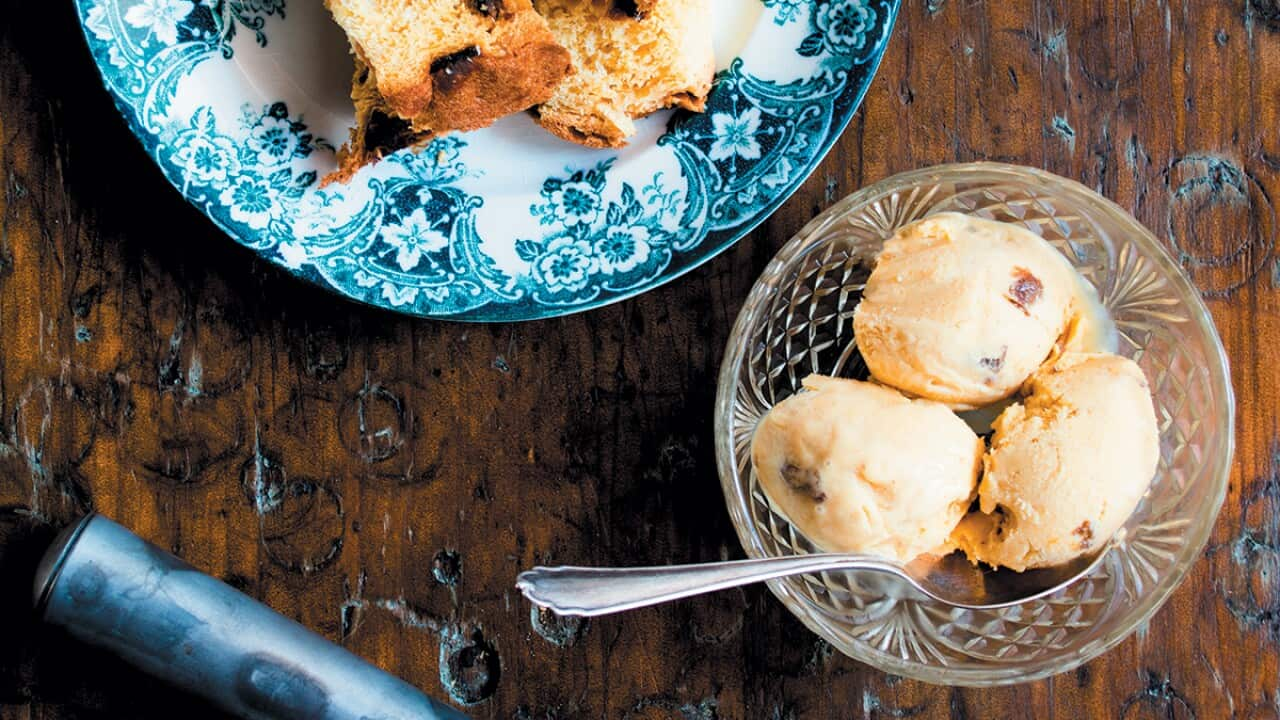The words pasta madre directly translate to ‘dough mother’ in Italian. But much like banh mi translating to ‘bread’ in Vietnamese, far removed from the sandwich of the same name, spaghetti has very little to do with pasta madre, aside from sharing their key ingredients, flour and water.
Pasta madre, also referred to as lievito madre (lievito meaning ‘yeast’), is a firm sourdough starter which is widely used across Italy and favoured for both its active nature, mild flavour profile (no sour taste) and ability to leaven egg and dairy-enriched doughs.
“So hard, stiff or firm starters are all the same thing. Instead of liquid you have a starter that feels and looks like a dough,” says Yoke Mardewi, who runs national sourdough workshops under her brand, .
Mardewi explains to SBS that a firm sourdough starter is maintained at around 50 per cent hydration. “That means if you’re using 1 kg of flour, for example, you’ll be using 500 g of water.”
So hard, stiff or firm starters are all the same thing. Instead of liquid you have a starter that feels and looks like a dough,
A lievito madre is difficult to start at home. If successful, you will be rewarded with a rapid rise on a range of baked goods that a wet sourdough starter (this what most of us know as a regular sourdough starter) can’t meet the needs of, like soft white loaves, focaccia, sweet buns, leavened pastries or panettone.
Emanuele Brancati, Ph.D and Assistant Professor of Economics at the University of Rome tells SBS he’s been obsessed with panettone for several years. Outside academia, Brancati runs a popular Instagram account called where he journals his progress, most recently making a series of 2kg panettoni.
“[The real challenge is] learning how to manage and cure the starter,” he says. “90 per cent of the result is always coming from the health of your lievito madre, the secret is never the recipe.”
Brancati says firm starters are traditionally preferred for panettone, adding that hydration is one critical factor to be taken into account.
Lievito madre is part of a family of stiff starters (maintained at around 50-60 per cent hydration), but what sets it apart is the addition of a sweetener that feeds the starter, which Mardewi says changes the balance between wild yeast and sour components like acetic acid and lactobacillus.
90 per cent of the result is always coming from the health of your lievito madre, the secret is never the recipe.
The wild yeasts in a lievito madre are very active, feeding off the sugars, making it ideal for the signature lift in a panettone. This is achieved by feeding the starter 2-3 times before making a panettone dough to encourage activity. When baking a regular loaf of bread with a lievito madre, you may notice it rises faster than with a wet starter.
The process of adding sugars to the firm starter differs, either added sugar or honey while feeding with flour and water, or by submerging the lievito madre in a sugar/water mixture occasionally to refresh it, called .
This kind of starter can be a convenient option for home cooks who don’t bake as regularly as it can be used and fed daily at room temperature, but also kept in the fridge and fed just .
“Traditionally, there are two ways you can [store lievito madre]. One is called legato – the bind method. So, you actually feed it … shape it, put it into a cloth and tie it up tightly with a rope. The other way is you feed it, then submerge it in water,” Mardewi says.
“In my experience I don’t see any difference between these methods and putting it in a container with a tight lid. It was something done in the past, before refrigeration.”
In my experience I don’t see any difference between these methods and putting it in a container with a tight lid. It was something done in the past, before refrigeration.
For a ‘sweeter’ dough, Mardewi suggests storing the starter at room temperature (and feeding daily) to attract more wild yeast, as storing in the fridge encourages more lactobacillus, contributing to a sour flavour.
And for those that struggle with intolerances, a lievito madre can be made using gluten-free or low-FODMAP flour mixes.
If you end up with a lievito madre of your own, Brancati has one piece of advice: “Just treat it as your own child. It calls for a lot of attention but if you treat it well it’ll find a way to repay you.”
Try it out with a recipe from Yoke

Yoghurt and olive oil bread





